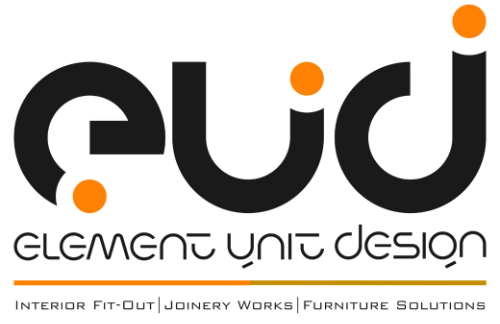The Fall of Pride: Lessons from Icarus and Modern Risks
1. Introduction: Understanding Pride and Its Consequences
Pride is a complex psychological and social trait that often manifests as a sense of self-worth, achievement, or superiority. While a healthy dose of pride can motivate personal growth and social standing, excessive or unchecked pride—commonly referred to as hubris—can cloud judgment and lead to downfall. Across cultures and history, pride has been both celebrated and condemned, reflecting its dual nature.
Historically, many societies have viewed pride as a double-edged sword. For example, in ancient Greece, pride was associated with heroic virtue but also with arrogance that beckoned tragedy. In Christianity, humility is prized as a virtue to counteract the dangers of pride. The common thread is that pride, when unmoderated, can precipitate failure, whether personal, social, or professional.
Semantic bridge: Recognizing pride’s potential for downfall is crucial in understanding both mythic allegories and real-life risks.
2. The Myth of Icarus: A Classic Lesson on Overconfidence
Summary of the Icarus myth and its moral
The myth of Icarus originates from Greek mythology. Icarus, the son of Daedalus, escapes Crete by constructing wings made of feathers and wax. Despite warnings, Icarus flies too close to the sun, causing the wax to melt. He plummets into the sea and drowns. The moral is clear: hubris and overconfidence can lead to tragic consequences.
Symbolism of flying too close to the sun as hubris
Flying too close to the sun symbolizes excessive ambition and arrogance—overestimating one’s capabilities while ignoring inherent risks. This allegory underscores the importance of humility and caution when pursuing heights of success or knowledge.
Consequences of unchecked pride: fall from great heights
Unchecked pride can result in dramatic failures, often with irreversible consequences. Modern examples include CEOs ignoring warning signs leading to corporate collapses or political leaders overestimating their control, culminating in downfall. The myth of Icarus remains relevant as a cautionary tale to temper ambition with prudence.
3. The Symbolism of Falling from Heights in Folklore and Life
Cultural interpretations of falling as loss of power or status
Across cultures, falling from a height often symbolizes a loss of power, prestige, or moral standing. In European folklore, a fall from a tower or cliff often signifies divine punishment or moral failure. Similarly, in Asian stories, a fall can represent the downfall of a ruler or hero who oversteps boundaries.
Real-world parallels: business failures, political downfalls
In contemporary life, the metaphor of falling manifests vividly: a CEO’s sudden resignation after scandal, a politician’s impeachment, or a startup’s collapse after overreaching. These instances highlight how pride and overconfidence can precipitate a fall from high status.
Psychological impact of falling and humility
Experiencing a fall often triggers psychological effects such as shame, humility, and a reevaluation of one’s limits. Recognizing vulnerability is essential for resilience, enabling individuals and organizations to adapt and grow stronger post-failure.
4. Modern Risks and the Fall of Pride
Examples from contemporary scenarios where pride leads to downfall
Recent corporate scandals, such as the downfall of high-profile CEOs who disregarded risks, exemplify the dangers of pride. For instance, companies that overestimate market dominance or ignore warning signs often face regulatory penalties or bankruptcy.
The role of pride in risky decision-making and overreach
Pride fuels overconfidence, leading decision-makers to ignore cautionary advice. Behavioral economics research shows that overconfidence bias increases when individuals overestimate their knowledge or control, often resulting in catastrophic outcomes.
Lessons learned from modern failures
Key lessons include the importance of humility, thorough risk assessment, and humility-driven decision frameworks. Recognizing limitations prevents overreach, much like Icarus’s wings melting due to hubris.
5. The Role of Self-awareness and Humility in Preventing Downfall
Strategies to cultivate humility and self-awareness
- Regular self-reflection and seeking feedback from peers
- Practicing mindfulness to remain grounded
- Setting realistic goals and acknowledging limitations
How recognizing limitations can mitigate risks associated with pride
Awareness of one’s weaknesses encourages cautious decision-making and prevents overconfidence. For example, in project management, honest risk assessment and acknowledging uncertainties lead to better outcomes.
The importance of balanced confidence versus arrogance
Confidence rooted in self-awareness fosters resilience, while arrogance breeds complacency. Striking this balance is vital to sustain success without risking overreach.
6. “Drop the Boss”: An Educational Analogy for Modern Risk Management
Explanation of “Drop the Boss” concept as a metaphor for risk-taking and decision-making
“Drop the Boss” is a strategic approach used in gaming and decision-making contexts, where players control when to take risks, such as dropping a coin for bonus points or executing a somersault for multipliers. This metaphor illustrates how controlling impulsive actions and timing can influence outcomes.
How this approach parallels controlling pride and avoiding overconfidence
Just as strategic risk management involves deliberate choices—adding coins or performing moves to boost winnings—managing pride requires conscious restraint and awareness of limits. Recognizing when to hold back prevents overreach that might lead to a fall.
The impact of strategic choices—like coins boosting winnings or somersaults adding multipliers—on outcomes
In practical terms, making calculated decisions—whether in finance, leadership, or personal pursuits—can amplify success while minimizing the risk of catastrophic failure. The principle is to balance ambition with prudence, akin to choosing optimal moments to “drop the boss.”
For a modern illustration of strategic risk management, consider exploring MEGA red caps bonus—a reminder that strategic choices can lead to greater rewards when made wisely.
7. Applying Lessons from Icarus and Modern Risks to Personal and Professional Life
Recognizing signs of hubris before a fall
Signs include overconfidence, dismissing advice, ignoring warning signs, and complacency. In leadership, it might manifest as taking unwarranted risks or dismissing dissenting opinions, which can precede failure.
Practical steps to prevent pride from clouding judgment
- Encourage open dialogue and dissent
- Conduct thorough risk assessments regularly
- Cultivate humility through mentorship and reflection
Case studies demonstrating successful humility and risk management
Companies like Toyota implemented continuous improvement processes that emphasized humility and learning, resulting in resilient growth. Leaders who admit mistakes and seek feedback often steer their organizations away from hubris-driven failures.
8. The Depth of Fall: Beyond the Surface—Psychological and Cultural Dimensions
Exploring the internal psychological processes during downfall
Psychologically, pride can lead to cognitive biases such as overconfidence, denial, and the Dunning-Kruger effect, where individuals overestimate their abilities. During a fall, internal conflict and shame often follow, but these can serve as catalysts for growth if managed properly.
Cultural narratives that reinforce lessons about pride and humility
Narratives from religious texts, folklore, and history underscore humility as a virtue and pride as a vice. For example, the biblical story of Lucifer’s fall exemplifies pride’s destructive potential, shaping cultural attitudes towards humility.
Non-obvious factors influencing pride-related falls
Factors such as social comparison, validation-seeking, and systemic pressures often fuel pride. Recognizing these hidden influences helps individuals and organizations remain cautious of overreach.
9. Conclusion: Embracing Humility as a Path to Resilience
“Humility is the true key to success. Those who humble themselves before failure can rise stronger afterward.” — Unknown
The stories of Icarus and contemporary failures serve as timeless lessons: pride can elevate us, but unchecked hubris can cause us to fall. Cultivating self-awareness and humility is essential in avoiding the pitfalls of overconfidence.
By balancing ambition with humility, individuals and organizations can transform setbacks into opportunities for growth. Recognizing the signs of hubris early and implementing strategic restraint—much like controlling risk in decision-making—builds resilience and fosters sustainable success.
Remember, every fall can be a stepping stone if approached with humility and a willingness to learn. Embrace these lessons to navigate the heights of achievement wisely and safely.






